Chrysler 2010 Annual Report Download - page 44
Download and view the complete annual report
Please find page 44 of the 2010 Chrysler annual report below. You can navigate through the pages in the report by either clicking on the pages listed below, or by using the keyword search tool below to find specific information within the annual report.-
 1
1 -
 2
2 -
 3
3 -
 4
4 -
 5
5 -
 6
6 -
 7
7 -
 8
8 -
 9
9 -
 10
10 -
 11
11 -
 12
12 -
 13
13 -
 14
14 -
 15
15 -
 16
16 -
 17
17 -
 18
18 -
 19
19 -
 20
20 -
 21
21 -
 22
22 -
 23
23 -
 24
24 -
 25
25 -
 26
26 -
 27
27 -
 28
28 -
 29
29 -
 30
30 -
 31
31 -
 32
32 -
 33
33 -
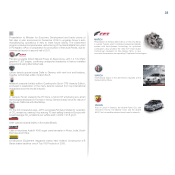 34
34 -
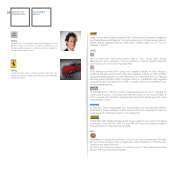 35
35 -
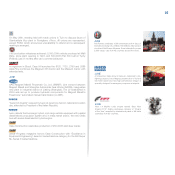 36
36 -
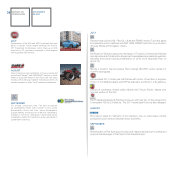 37
37 -
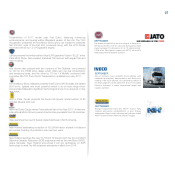 38
38 -
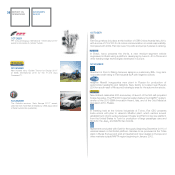 39
39 -
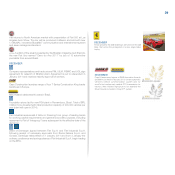 40
40 -
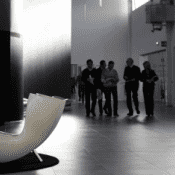 41
41 -
 42
42 -
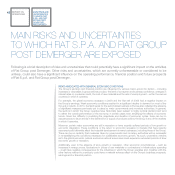 43
43 -
 44
44 -
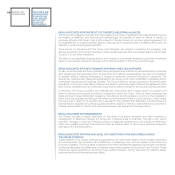 45
45 -
 46
46 -
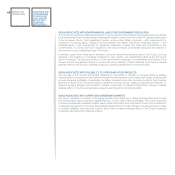 47
47 -
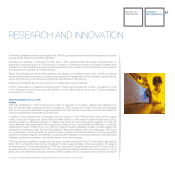 48
48 -
 49
49 -
 50
50 -
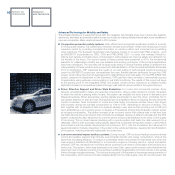 51
51 -
 52
52 -
 53
53 -
 54
54 -
 55
55 -
 56
56 -
 57
57 -
 58
58 -
 59
59 -
 60
60 -
 61
61 -
 62
62 -
 63
63 -
 64
64 -
 65
65 -
 66
66 -
 67
67 -
 68
68 -
 69
69 -
 70
70 -
 71
71 -
 72
72 -
 73
73 -
 74
74 -
 75
75 -
 76
76 -
 77
77 -
 78
78 -
 79
79 -
 80
80 -
 81
81 -
 82
82 -
 83
83 -
 84
84 -
 85
85 -
 86
86 -
 87
87 -
 88
88 -
 89
89 -
 90
90 -
 91
91 -
 92
92 -
 93
93 -
 94
94 -
 95
95 -
 96
96 -
 97
97 -
 98
98 -
 99
99 -
 100
100 -
 101
101 -
 102
102 -
 103
103 -
 104
104 -
 105
105 -
 106
106 -
 107
107 -
 108
108 -
 109
109 -
 110
110 -
 111
111 -
 112
112 -
 113
113 -
 114
114 -
 115
115 -
 116
116 -
 117
117 -
 118
118 -
 119
119 -
 120
120 -
 121
121 -
 122
122 -
 123
123 -
 124
124 -
 125
125 -
 126
126 -
 127
127 -
 128
128 -
 129
129 -
 130
130 -
 131
131 -
 132
132 -
 133
133 -
 134
134 -
 135
135 -
 136
136 -
 137
137 -
 138
138 -
 139
139 -
 140
140 -
 141
141 -
 142
142 -
 143
143 -
 144
144 -
 145
145 -
 146
146 -
 147
147 -
 148
148 -
 149
149 -
 150
150 -
 151
151 -
 152
152 -
 153
153 -
 154
154 -
 155
155 -
 156
156 -
 157
157 -
 158
158 -
 159
159 -
 160
160 -
 161
161 -
 162
162 -
 163
163 -
 164
164 -
 165
165 -
 166
166 -
 167
167 -
 168
168 -
 169
169 -
 170
170 -
 171
171 -
 172
172 -
 173
173 -
 174
174 -
 175
175 -
 176
176 -
 177
177 -
 178
178 -
 179
179 -
 180
180 -
 181
181 -
 182
182 -
 183
183 -
 184
184 -
 185
185 -
 186
186 -
 187
187 -
 188
188 -
 189
189 -
 190
190 -
 191
191 -
 192
192 -
 193
193 -
 194
194 -
 195
195 -
 196
196 -
 197
197 -
 198
198 -
 199
199 -
 200
200 -
 201
201 -
 202
202 -
 203
203 -
 204
204 -
 205
205 -
 206
206 -
 207
207 -
 208
208 -
 209
209 -
 210
210 -
 211
211 -
 212
212 -
 213
213 -
 214
214 -
 215
215 -
 216
216 -
 217
217 -
 218
218 -
 219
219 -
 220
220 -
 221
221 -
 222
222 -
 223
223 -
 224
224 -
 225
225 -
 226
226 -
 227
227 -
 228
228 -
 229
229 -
 230
230 -
 231
231 -
 232
232 -
 233
233 -
 234
234 -
 235
235 -
 236
236 -
 237
237 -
 238
238 -
 239
239 -
 240
240 -
 241
241 -
 242
242 -
 243
243 -
 244
244 -
 245
245 -
 246
246 -
 247
247 -
 248
248 -
 249
249 -
 250
250 -
 251
251 -
 252
252 -
 253
253 -
 254
254 -
 255
255 -
 256
256 -
 257
257 -
 258
258 -
 259
259 -
 260
260 -
 261
261 -
 262
262 -
 263
263 -
 264
264 -
 265
265 -
 266
266 -
 267
267 -
 268
268 -
 269
269 -
 270
270 -
 271
271 -
 272
272 -
 273
273 -
 274
274 -
 275
275 -
 276
276 -
 277
277 -
 278
278 -
 279
279 -
 280
280 -
 281
281 -
 282
282 -
 283
283 -
 284
284 -
 285
285 -
 286
286 -
 287
287 -
 288
288 -
 289
289 -
 290
290 -
 291
291 -
 292
292 -
 293
293 -
 294
294 -
 295
295 -
 296
296 -
 297
297 -
 298
298 -
 299
299 -
 300
300 -
 301
301 -
 302
302 -
 303
303 -
 304
304 -
 305
305 -
 306
306 -
 307
307 -
 308
308 -
 309
309 -
 310
310 -
 311
311 -
 312
312 -
 313
313 -
 314
314 -
 315
315 -
 316
316 -
 317
317 -
 318
318 -
 319
319 -
 320
320 -
 321
321 -
 322
322 -
 323
323 -
 324
324 -
 325
325 -
 326
326 -
 327
327 -
 328
328 -
 329
329 -
 330
330 -
 331
331 -
 332
332 -
 333
333 -
 334
334 -
 335
335 -
 336
336 -
 337
337 -
 338
338 -
 339
339 -
 340
340 -
 341
341 -
 342
342 -
 343
343 -
 344
344 -
 345
345 -
 346
346 -
 347
347 -
 348
348 -
 349
349 -
 350
350 -
 351
351 -
 352
352 -
 353
353 -
 354
354 -
 355
355 -
 356
356 -
 357
357 -
 358
358 -
 359
359 -
 360
360 -
 361
361 -
 362
362 -
 363
363 -
 364
364 -
 365
365 -
 366
366 -
 367
367 -
 368
368 -
 369
369 -
 370
370 -
 371
371 -
 372
372 -
 373
373 -
 374
374 -
 375
375 -
 376
376 -
 377
377 -
 378
378 -
 379
379 -
 380
380 -
 381
381 -
 382
382 -
 383
383 -
 384
384 -
 385
385 -
 386
386 -
 387
387 -
 388
388 -
 389
389 -
 390
390 -
 391
391 -
 392
392 -
 393
393 -
 394
394 -
 395
395 -
 396
396 -
 397
397 -
 398
398 -
 399
399 -
 400
400 -
 401
401 -
 402
402
 |
 |

43
RISKS ASSOCIATED WITH FINANCING REQUIREMENTS
The Group’s future performance will depend on, among other things, its ability to finance debt repayment
obligations and planned investments from operating cash flow, available liquidity, the renewal or refinancing
of existing bank loans and/or facilities and possible recourse to capital markets or other sources of financing.
Although the Group has measures in place to ensure that adequate levels of working capital and liquidity are
maintained, any declines in sales volumes could have a negative impact on the cash-generating capacity of its
operating activities. The Group could, therefore, find itself in the position of having to seek additional financing
and/or refinance existing debt, including in unfavorable market conditions with limited availability of funding
and a general increase in funding costs. Any difficulty in obtaining financing could have a material adverse
effect on the Group’s business prospects, earnings and/or financial position.
RISKS ASSOCIATED WITH FIAT S.P.A.’S CREDIT RATING
The ability to access the capital markets or other forms of financing and the related costs are dependent,
amongst other things, on the Group’s credit ratings. Following downgrades by the major rating agencies in the
first quarter of 2009, Fiat S.p.A. is currently rated below investment grade with ratings on its long-term debt
of Ba1 (with negative outlook) from Moody’s Investors Service, BB+ (with negative outlook) from Standard
& Poor’s Ratings Services and BB+ (with negative outlook) from Fitch Ratings Ltd.
On 23 April 2010, following Fiat’s announcement of the proposed Demerger, Standard & Poor’s placed Fiat
S.p.A. on CreditWatch with negative implications. The CreditWatch status was confirmed on 1 October 2010
and the rating agency is currently reviewing the Company’s status. On 21 July 2010, Moody’s Investors Service
placed Fiat S.p.A.’s rating on review for possible downgrade. That review was completed on 9 February 2011
and Moody’s confirmed a rating of Ba1 with negative outlook. On 22 April 2010, however, Fitch Ratings Ltd.
confirmed its rating (BB+ with negative outlook) on Fiat’s long-term debt.
Any further downgrades could increase the Group’s cost of capital and potentially limit its access to sources
of financing with a consequent material adverse effect on the Group’s business prospects, earnings and/or
financial position.
RISKS ASSOCIATED WITH FLUCTUATIONS IN CURRENCY, INTEREST AND CREDIT RISK
The Group, which operates in numerous markets worldwide, is naturally exposed to market risks stemming
from fluctuations in currency and interest rates. The exposure to currency risk is mainly linked to the difference
in geographic distribution between the Group’s manufacturing activities and its commercial activities, resulting in
cash flows from exports denominated in currencies that differ from those associated with production activities.
The Group uses various forms of financing to cover funding requirements for its industrial activities and for
financing customers and dealers. Moreover, liquidity for Industrial Activities was also principally invested in
variable-rate or short-term financial instruments. The Financial Services companies operate a matching policy
to offset the impact of differences in rates of interest on the financed portfolio and related liabilities. Nevertheless,
changes in interest rates can result in increases or decreases in revenues, finance costs and margins.
Consistent with its risk management policies, the Group seeks to manage risks associated with fluctuations
in currency and interest rates through the use of financial hedging instruments. Despite such hedges being in
place, sudden fluctuations in currency or interest rates could have an adverse effect on the Group’s business
prospects, earnings and/or financial position.
The Group’s Financial Services activities are also subject to the risk of insolvency of dealers and end customers,
as well as unfavorable economic conditions in markets where these activities are carried out, which the Group
seeks to mitigate through the credit approval policies applied to dealers and end customers.
